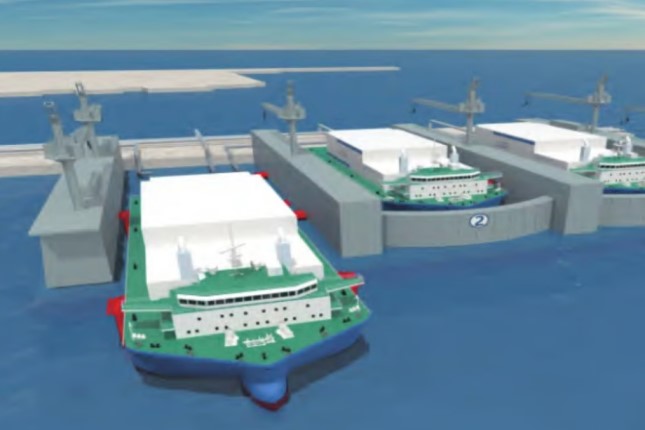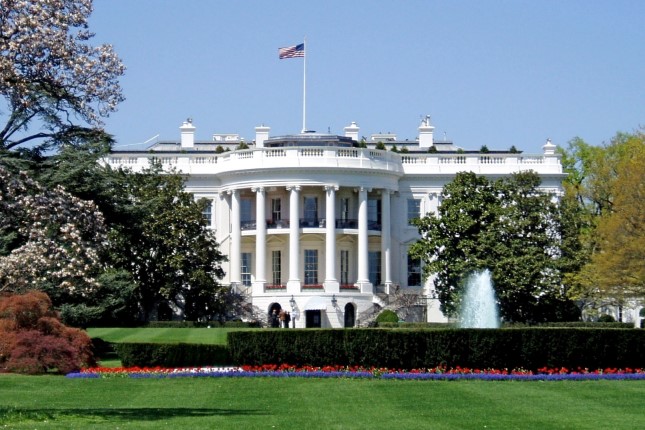After 10 years in development, ‘safety and feasibility’ remain top concerns for authorities, project scientists say.
The future of an ambitious Chinese plan to build a fleet of nuclear power reactors that would float on the waters of the South China Sea remained uncertain after authorities expressed security concerns, according to engineers involved in the project.
With construction ready to begin, regulators have withheld final approval to build the nation’s first floating nuclear power plant, which was intended to generate electricity for critical marine infrastructure, some of it far from the mainland.
“Floating nuclear power plants have various natural advantages and the technology to build them is ready. Both China National Nuclear Corporation and China Shipbuilding Industry Corporation have been actively conducting research and development work. However, construction of China’s first floating nuclear power plant demonstration project has yet to be approved,” said a team led by senior engineer Wang Donghui from the National Energy Offshore Nuclear Power Platform Technology Research Centre.
“Safety and feasibility are still the main concerns of the regulatory authorities,” Wang and his colleagues said in a paper published in the peer-reviewed journal Nuclear Power Engineering on May 25.
The move was a surprise for the project’s scientists, since floating nuclear power reactors are generally regarded as safer than those on land.
According to Wang’s team, the floating power plants would be more acceptable for governments and the general public since they would be located at sea with less impact than land-based facilities.
They are also less vulnerable to earthquakes because seismic waves do not travel well through water.
“The ocean acts as a natural heat sink, which helps cool the reactor core and makes it inherently safer. In extreme accident scenarios, seawater can be piped in for an emergency coolant to prevent a core meltdown and ensure reactor safety,” they said in the paper.
The team said that the reactor and floating platform that supports it were “already quite technologically mature”.
China is among the world leaders in nuclear power development, with various types of reactors including pressurised water reactors, heavy water reactors, and gas-cooled reactors either in operation or under development.
The industrial unit responsible for developing reactors for floating plants had invested more than 10 years of research, the team said.
China also has advanced ship design capabilities, as well as domestic design and manufacturing units capable of building such floating platforms, they said.
It had been hoped that a floating nuclear power plant would provide a reliable source of power to support military and civilian activities on remote islands in the South China Sea, according to previous reports in state media.
China has built military installations on several disputed islands in the region, including the Spratly and Paracel islands. The facilities, which include radar systems, communications equipment and other electronics, require a significant amount of electricity.
A floating nuclear power plant could also be deployed relatively quickly and easily compared to a traditional land-based power plant constructed on an island. It is particularly important in a region where distance or political tensions can hinder access to fuel.
But the presence of a nuclear reactor could also increase tensions between countries and raise the risk of accidents or incidents with serious environmental or geopolitical consequences.
One of the major safety concerns is that floating nuclear power plants could face security threats not only from sea and air, but also from underwater attacks, according to Wang’s team.
An enemy submarine, for example, could attempt to sabotage the facility by planting explosives on its hull or damaging its cooling systems. Unmanned aerial vehicles could also fly over the plant and drop bombs or other projectiles on it.
Protecting a floating nuclear power plant from “underwater divers, vessels, floating objects or airborne objects”, would require a comprehensive ship security system, the engineers said.
This system would consist of target detection subsystems, data processing and monitoring subsystems, and target disposal subsystems. The entire plant would be divided into different zones and ranges for security purposes.
However, “there is currently no mature or widely used security solution for floating nuclear power plants”, they said. As such, the power plants would not be protected from potential threats in the open sea.
Military vessels could be deployed to protect the floating platforms, but the presence of such ships could raise tensions with neighbouring countries.
A Beijing-based researcher on marine environment engineering, who was not involved in the project but has taken part in the evaluation of large-scale infrastructure projects, said that the bombing of Russia’s Nord Stream pipelines could have also been seen by the Chinese government as a warning.
While no country or entity has admitted to the sabotage, “there is a popular belief that the United States is behind this”, said the researcher who requested not to be named due to the sensitivity of the issue.
“Attacking the core infrastructure of a permanent member of the UN Security Council was regarded as taboo before. Not any more,” he said.
There is a growing concern in Beijing that the US would attack Chinese infrastructure in the South China Sea, and the sinking of a floating nuclear power plant could spark a disaster much worse than the Nord Stream blasts, according to the researcher.
Nuclear reactors also contain radioactive materials that can leak into the surrounding environment if damaged or breached, posing a significant threat to marine life and ecosystems in the region. Humans would also be at risk if the radioactive waste entered the food chain. Losing such a facility would be a significant financial blow for Beijing.
An attack on a land-based nuclear plant would be regarded as an act of war by China and the international community, but assessing blame for a clandestine strike on a floating nuclear plant in the open sea would be more difficult, making retaliation challenging with serious implications for China and its neighbours, according to the researcher.
“China has no intention to escalate tensions in the South China Sea because its priority is economic development, which requires stability in the region,” he added.
In response to such concerns, Wang’s team has proposed an alternative dock-based floating nuclear power plant to be situated near the Chinese mainland.
The proposed facility – known as ACP100S – was designed to be anchored either at a dock or a port and would be built on a large barge or platform that could be towed to a desired location.
By placing the floating reactor closer to land, China “can fully utilise near-shore resources to deploy defence against external threats”, the researchers said.
They have also suggested putting the floating plant in Bohai, an inner sea over which China has full control. It was not clear if the regulators were considering the revised plans.
After building and operating the near-shore floating plant, China could later build a more powerful model for the South China Sea and beyond, according to the researchers.
“Adopting a two-step strategy … is conducive to achieving a breakthrough as soon as possible,” they added.
Photo: Computerised images show a proposed dock-based floating nuclear power plant © National Energy Offshore Nuclear Power Platform Technology Research Centre.
Source: South China Morning Post.
































